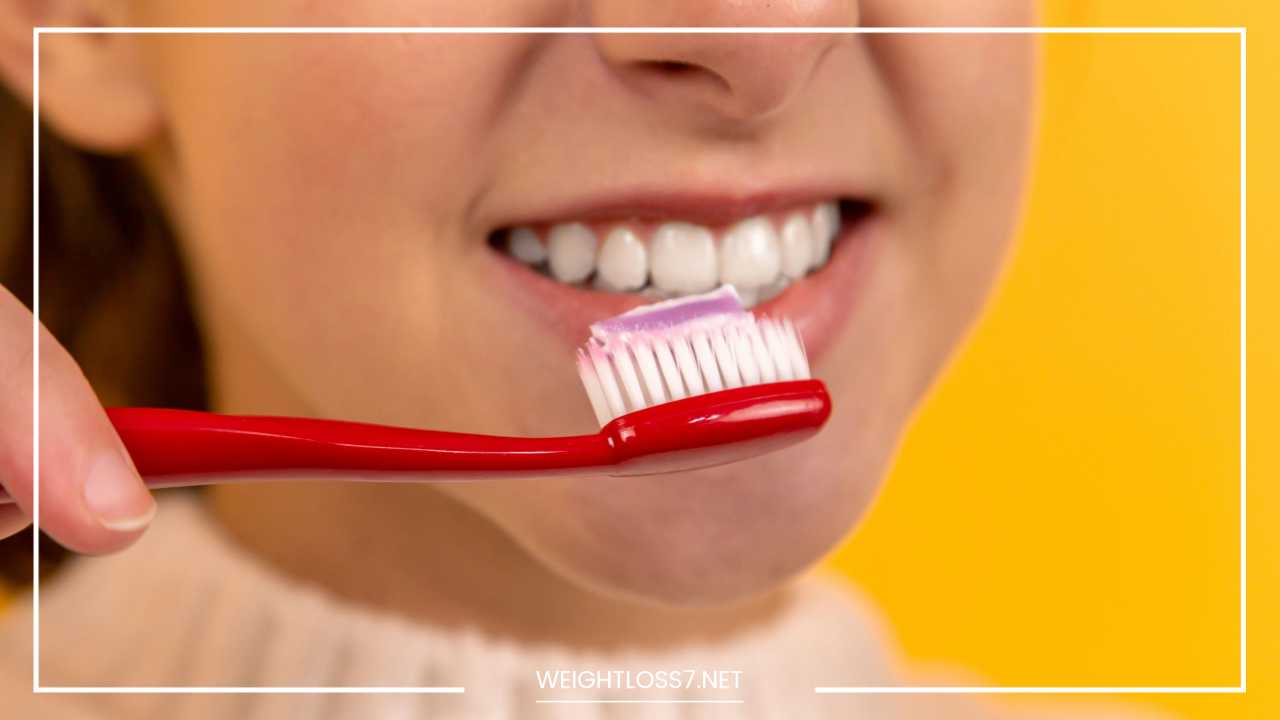Dental Care 101: Brushing, Flossing, and Keeping Your Smile Healthy

Dental Care
Shining Smile, Healthy You: A Comprehensive Guide to Dental Care
Your smile is often the first thing people notice. It radiates confidence, joy, and overall well-being. But a healthy smile goes beyond aesthetics; it’s a window to your oral health, which is directly linked to your overall health.
This blog post is your one-stop guide to understanding dental care, from essential daily practices to professional treatments. Whether you’re looking to maintain a sparkling smile or address specific concerns, you’ll find valuable information here.
The Importance of Dental Care
The human mouth is a complex ecosystem teeming with bacteria, both good and bad. When good bacteria thrive in a balanced environment, your mouth stays healthy. However, poor oral hygiene allows harmful bacteria to multiply, leading to a variety of problems:
- Tooth Decay: Bacteria feed on sugar and starches in food, producing acid that erodes tooth enamel. This can cause cavities, which are painful and require fillings to repair.
- Gum Disease: Gingivitis, the early stage of gum disease, causes inflammation and bleeding gums. If left untreated, it can progress to periodontitis, which damages the bone supporting your teeth and can lead to tooth loss.
- Bad Breath: The buildup of bacteria and food debris is the primary culprit behind bad breath, also known as halitosis.
- Other Health Issues: Research suggests a link between poor oral health and other health problems, such as heart disease, stroke, and diabetes.
Maintaining good dental hygiene is crucial for preventing these issues and promoting overall well-being.
Brushing and Flossing: The Foundation of Dental Care
The cornerstone of good oral hygiene is a consistent brushing and flossing routine. Here’s how to do it right:
Brushing:
- Use a soft-bristled toothbrush with a small head that can reach all areas of your mouth.
- Brush twice a day for two minutes each time.
- Use a fluoride toothpaste, as fluoride strengthens tooth enamel and helps prevent cavities.
- Follow the modified Bass technique: Tilt the brush at a 45-degree angle against the gum line and use gentle short strokes to clean both the tooth surfaces and the gum line. Brush the chewing surfaces, the front and back of each tooth. Don’t forget your tongue to remove bacteria that contribute to bad breath.
Flossing:
- Floss once a day to remove plaque and food particles from between your teeth, where brushing can’t reach.
- Use about 18 inches of floss, wrapping the ends around your middle fingers.
- Gently guide the floss between each tooth, scraping the sides to remove plaque.
Additional Tips:
- Replace your toothbrush every three months, or sooner if the bristles become frayed.
- Consider using an electric toothbrush, which may be more effective than a manual one for removing plaque.
- Use a tongue scraper to remove bacteria and freshen your breath.
Diet and Your Teeth
What you eat and drink plays a significant role in your oral health. Here’s how to make smart dietary choices for a healthy smile:
- Limit sugary and starchy foods: Bacteria feed on these substances, producing acid that attacks tooth enamel. Reduce sugary drinks like soda, juices, and processed snacks. Opt for water as your primary beverage.
- Choose healthy snacks: Fruits and vegetables are good choices for healthy snacking. They are low in sugar and high in vitamins and minerals that support oral health.
- Calcium-rich foods: Calcium is essential for strong teeth and bones. Include dairy products, leafy greens, and fortified foods in your diet.
- Chew sugar-free gum: Chewing sugar-free gum after meals can increase saliva production, which helps wash away food particles and neutralize harmful acids.
Regular Dental Checkups and Cleanings
Professional dental care is vital for maintaining optimal oral health. Regular checkups and cleanings allow your dentist to identify and address problems early on, preventing more serious issues down the line.
What to expect during a dental checkup:
- A thorough examination of your teeth, gums, and oral cavity.
- X-rays may be taken to detect hidden cavities or other problems.
- Your dentist will clean your teeth professionally, removing plaque and tartar buildup that brushing and flossing alone cannot reach.
- They will discuss your oral hygiene habits and provide personalized recommendations for improvement.
How often should you visit the dentist?
The recommended frequency of dental visits can vary depending on your individual risk factors. Generally, it’s recommended to see your dentist for a checkup and cleaning at least once a year. People with certain health conditions, pregnant women, or those with a history of gum disease may need more frequent visits.
Common Dental Problems and Treatments
Several dental problems can arise if oral hygiene is neglected, including tooth decay, gum disease, bad breath, and even tooth loss. These issues can not only impact your smile but also cause discomfort, pain, and potentially affect your overall health.
Shining Smile, Healthy You: A Comprehensive Guide to Dental Care
We delved into the foundation of dental care in the previous section. Now, let’s explore some common dental problems and the treatments available:
Common Dental Problems and Treatments:
1. Tooth Decay and Cavities:
- Symptoms: Toothache, sensitivity to hot or cold, visible holes in the tooth.
- Treatments:
- Fillings: A dentist removes the decayed portion of the tooth and fills the cavity with a tooth-colored composite resin or other material.
- Crowns: In severe cases, a crown (a cap placed over the tooth) may be needed to restore strength and functionality.
- Root Canals: If decay reaches the pulp (the inner chamber) of the tooth, a root canal is necessary to remove the infected tissue and save the tooth.
2. Gum Disease:
- Symptoms: Red, swollen, or bleeding gums, receding gums, persistent bad breath, loose teeth.
- Treatments:
- Professional cleaning: A dentist or hygienist removes plaque and tartar buildup from above and below the gum line.
- Scaling and root planing: A deep cleaning procedure to remove stubborn plaque and tartar from the root surfaces of the teeth.
- Antibiotics: May be prescribed in some cases to fight infection.
- Periodontal surgery: In severe cases, surgery may be needed to repair damaged bone and gum tissue.
3. Sensitive Teeth:
- Symptoms: Pain or discomfort when exposed to hot, cold, sweet, or acidic foods and drinks.
- Treatments:
- Desensitizing toothpaste: These toothpastes contain ingredients that block tiny channels in the teeth that transmit pain signals.
- Fluoride treatments: Fluoride strengthens tooth enamel, making it less sensitive.
- Mouthguards: If teeth grinding (bruxism) is causing sensitivity, a mouthguard worn at night can protect teeth.
4. Bad Breath (Halitosis):
- Symptoms: Persistent unpleasant odor in the breath.
- Treatments:
- Maintain good oral hygiene: Brushing, flossing, and tongue scraping are crucial to remove bacteria that cause bad breath.
- Address underlying medical conditions: Certain medical conditions can contribute to bad breath. Consulting a doctor may be necessary.
- Mouthwash: Use a therapeutic mouthwash containing chlorhexidine or cetylpyridinium chloride for short-term relief. Consider consulting your dentist for recommended brands.
5. Missing Teeth:
- Symptoms: Gaps in the smile, difficulty chewing, speech impediments.
- Treatments:
- Dental implants: A titanium screw surgically implanted into the jawbone acts as an artificial root for a dental crown, bridge, or denture.
- Dental bridges: Replacement teeth anchored to the surrounding healthy teeth.
- Dentures: Removable full or partial plates of artificial teeth that replace missing teeth and support facial structures.
6. Misaligned Teeth (Malocclusion):
- Symptoms: Crooked, crowded, or gapped teeth, difficulty chewing, jaw pain.
- Treatments:
- Braces: Traditional metal braces or clear aligners (e.g., Invisalign) gradually move teeth into their correct positions.
- Retainers: Worn after braces to maintain the achieved tooth alignment.
7. Wisdom Teeth:
- Symptoms: Pain, swelling, and difficulty chewing when wisdom teeth erupt.
- Treatments:
- Wisdom tooth extraction: Removal of wisdom teeth, especially if they are impacted (stuck below the gum line) or causing problems.
8. Oral Thrush:
- Symptoms: White patches or coating on the tongue or inner cheeks, loss of taste.
- Treatments:
- Antifungal medications: Oral medications or lozenges to treat the fungal infection causing oral thrush.
9. Canker Sores:
- Symptoms: Small, painful ulcers on the inside of the mouth or on the tongue.
- Treatments:
- Over-the-counter pain relievers: Can provide temporary relief from discomfort.
- Rinses and gels: May help soothe the sores and promote healing.
10. Teeth Grinding (Bruxism):
- Symptoms: Teeth grinding or clenching, headaches, jaw pain, worn-down teeth.
- Treatments:
- Mouthguards: Wearing a mouthguard at night protects teeth from wear and tear caused by grinding.
- Stress management: Techniques like relaxation therapy or meditation can help reduce stress, a common trigger for bruxism.
Additional Considerations:
- Dental Emergencies: Knowing how to handle a dental emergency, such as a knocked-out tooth or a chipped tooth, can be crucial. Store knocked-out teeth in milk and see a dentist immediately.
- Oral Cancer: Regular dental checkups allow dentists to screen for oral cancer in its early stages, when treatment is most successful. Early detection is key for a positive prognosis.
- Dental Care for Children: Establishing good oral hygiene habits early in life is essential.
- Start cleaning your baby’s gums with a soft cloth even before their first tooth erupts.
- Use a soft-bristled toothbrush with a smear of fluoride toothpaste (size of a grain of rice) once teeth appear.
- Help your child brush until they are around 7 or 8 years old.
- Schedule regular dental visits starting within 6 months of the first tooth eruption or by their first birthday.
- Dental Care for Seniors: As we age, oral health concerns can become more prevalent.
- Regular dental checkups are crucial for monitoring gum health and addressing any age-related changes.
- Dentures or dental implants may be necessary to replace missing teeth and maintain proper chewing function.
- Dry mouth, a common side effect of some medications, can increase the risk of cavities. Sugar-free lozenges or sprays can help stimulate saliva production.
Maintaining a Healthy Smile:
By implementing these tips and recommendations, you can take charge of your oral health and maintain a healthy, beautiful smile for life:
- Brush your teeth twice a day for two minutes each time.
- Floss once a day to remove plaque and food particles from between your teeth.
- Eat a healthy diet that limits sugary and starchy foods.
- Drink plenty of water throughout the day.
- Don’t smoke or use tobacco products, which can stain teeth and increase the risk of oral cancer.
- Visit your dentist for regular checkups and cleanings, typically once or twice a year.
- Address any dental concerns promptly to prevent them from becoming more serious.
By prioritizing good oral hygiene habits and collaborating with your dentist, you can ensure a healthy mouth that contributes to your overall well-being and allows you to confidently share your radiant smile with the world.

















